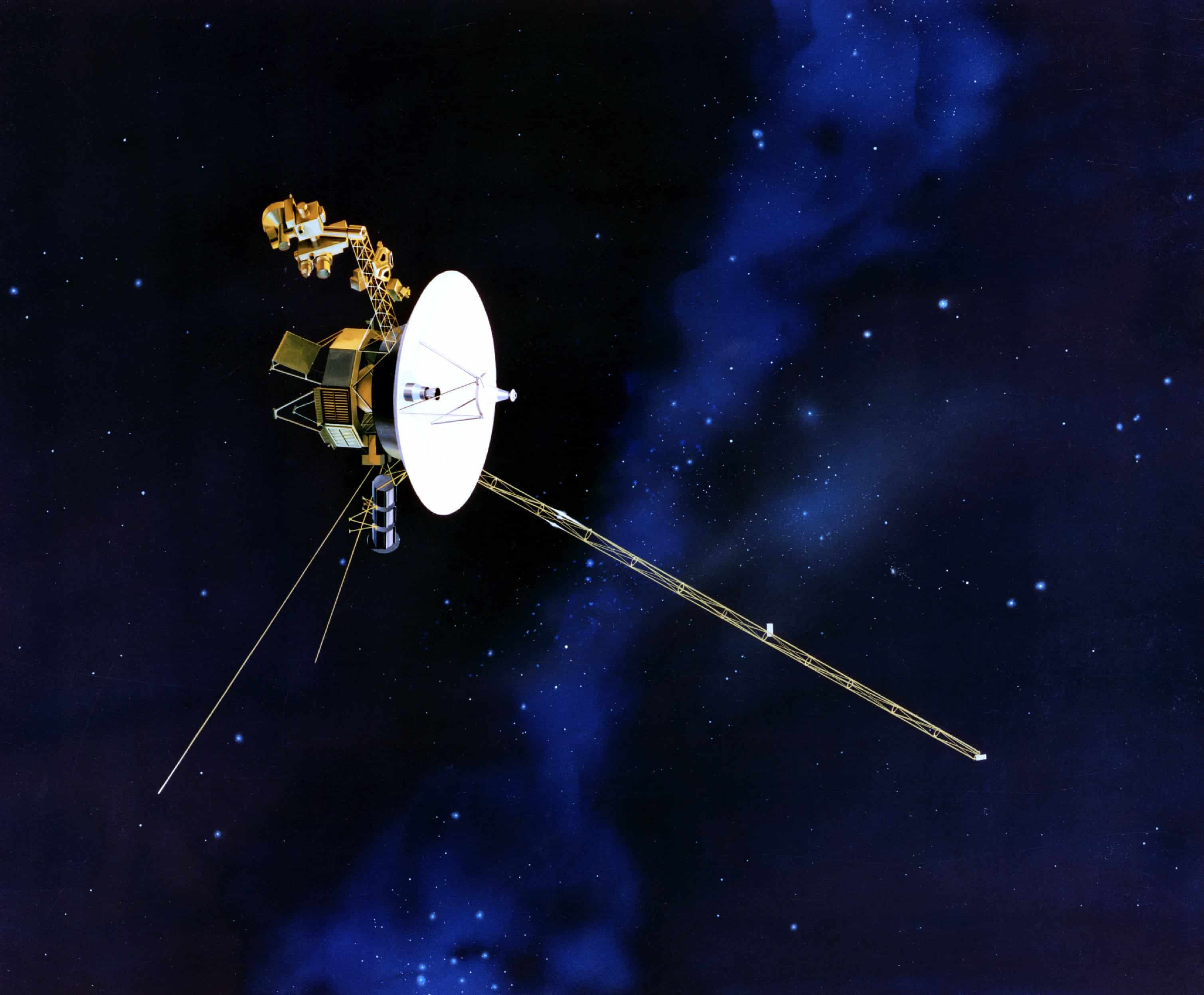


NASA's Voyager 1 spacecraft, which has been traveling through interstellar space for the past 47 years, recently lost contact with Earth. However, thanks to a radio transmitter that had not been used since 1981, the American space agency was able to re-establish communication with the spacecraft. This unexpected reconnection occurred after the team hypothesized that Voyager 1's fault protection system had triggered and switched to an alternate radio transmitter. The success of this reconnection marks a major milestone for the Voyager mission and opens up new possibilities for communication with the distant spacecraft.
NASA Re-establishes Communication with Voyager 1 After 47 Years
NASA's Voyager 1 spacecraft, launched in 1977, has been exploring interstellar space for the past 47 years. In March 2023, the spacecraft experienced an anomaly that disrupted communication with Earth. However, using a backup transmitter that had not been used in decades, the space agency has successfully re-established contact with Voyager 1.
Background
Voyager 1 is one of two identical spacecraft launched by NASA in the 1970s to explore the outer planets. The spacecraft have traveled billions of miles from Earth and have provided invaluable scientific data on the planets they have encountered.
Anomaly and Recovery
In March 2023, Voyager 1 experienced an anomaly that affected its Attitude Control System (ACS). The ACS is responsible for keeping the spacecraft oriented correctly in space. The anomaly caused the ACS to become less responsive, resulting in the loss of communication with Earth.
NASA engineers hypothesized that Voyager 1's fault protection system had triggered and switched to an alternate radio transmitter. This transmitter, which had been in standby mode since 1981, was designed as a backup in case of a primary transmitter failure.
Using the backup transmitter, NASA was able to re-establish communication with Voyager 1 on April 5, 2023. The spacecraft is now operating normally and transmitting data back to Earth.
Significance of the Reconnection
The reconnection with Voyager 1 is a major milestone for the Voyager mission. It proves that the spacecraft is still operational despite its age and the challenges of interstellar space.
The reconnection also opens up new possibilities for communication with Voyager 1. The backup transmitter was previously only used for telemetry transmissions. However, NASA is now exploring the possibility of using it for full-duplex communication, which would allow for more complex commands and data transfers.
FAQs
1. What caused the anomaly on Voyager 1? Answer: The cause of the anomaly is still under investigation. However, NASA believes that it was likely related to a software issue in the ACS.
2. Why was the backup transmitter not used previously? Answer: The backup transmitter was kept in reserve as a contingency plan in case the primary transmitter failed. NASA wanted to conserve its power and resources until it was absolutely necessary.
3. How long will Voyager 1 continue to operate? Answer: Voyager 1 is expected to continue transmitting data back to Earth until its power source, a Radioisotope Thermoelectric Generator (RTG), is depleted. This is expected to happen sometime in the 2030s.
4. What scientific discoveries has Voyager 1 made? Answer: Voyager 1 has made numerous scientific discoveries, including the first detailed images of Jupiter and Saturn, the discovery of lightning on Jupiter's moon Io, and the first flyby of Uranus and Neptune.
5. Will Voyager 1 ever return to Earth? Answer: No, Voyager 1 is too far away and traveling too fast to return to Earth. It is expected to eventually leave the solar system and enter interstellar space.

Tecno has released a new addition to their Spark series in India, the Spark Go 5G, which boasts a 6000mAh battery and a unique camera setup. At a price of under Rs 10,000, it is claimed to be the thinnest in its price segment. Available in four colors and a single storage variant, the phone will be available for purchase from various online and offline stores starting July 21.

On Friday morning, the online ticket booking portal of Indian Railway Catering and Tourism Corporation (IRCTC) crashed, leaving thousands of users unable to complete their bookings for the upcoming Diwali and Chhath Puja holidays. The outage, believed to be caused by an overwhelming number of Tatkal booking requests, spiked sharply around 10 am and continued for several hours. Frustrated users flooded social media with complaints and memes, urging the IRCTC to improve its technology to handle peak traffic during festive seasons.

After years of offering free storage for its popular Memories feature, Snapchat has announced that users will now have to pay for storage if they exceed the 5GB limit. This has caused backlash and frustration among loyal Snapchatters, who feel that they are being taken advantage of and that the sudden change is unfair. Experts believe that this move signals a trend of social media platforms charging for storage as users accumulate more content over time.

A recent YouTube video has given a sneak peek into Samsung's upcoming Galaxy S26 Ultra and its possible specifications. The phone is expected to feature Qualcomm's new Snapdragon 8 Elite Gen 5 chip, making it highly capable for heavy app usage, multitasking, and gaming. Along with improved display and privacy features in One UI 8.5, the phone is rumored to come with a quad-camera setup and a larger battery with faster charging capabilities. Samsung fans may have a lot to look forward to if these leaks turn out to be true.

As anticipation for Samsung's upcoming flagship phone lineup-the Galaxy S26 Ultra builds, rumors and leaks about its features and design have started circulating. With the reported return of the Plus model, the lineup is expected to consist of four models, with the Ultra being the most buzzed-about one. The Ultra may see upgrades in its battery capacity, fast charging capabilities, and processor, while also possibly featuring a new pill-shaped camera island. However, these details are not officially confirmed, and the device is expected to debut in January 2026, according to reports.

YouTube, the Google-owned video streaming platform, suffered a significant global outage, leaving millions of affected users unable to access content for over an hour. The disruption affected not only the main platform, but also related services like YouTube Music and YouTube TV. As users took to social media to confirm the disruption, some pointed out the irony of still receiving ads while videos were not playing. A spokesperson for YouTube reassured users and acknowledged the issue, promising updates as it was being resolved.

Google is getting ready to make a major impact on the creative landscape with the release of VEO 3.1. It has been widely speculated that this update will bring longer clips and improved audio-visual quality for creators through the Gemini app and Vertex AI. Evidence of the release is mounting, with a disclaimer appearing in Gemini and mentions of VEO 3.0 preview models on Vertex AI. Google's staged rollout strategy indicates that they are looking to gather feedback and maximize adoption, solidifying their position in the world of generative media. Keep an eye out for more updates as the release date approaches.

Subscribers of Jio Hotstar were left frustrated and disappointed when they were unable to access the popular app due to a sudden technical glitch. The platform, known for its live events and ongoing shows, acknowledged the issue and apologized for the inconvenience caused to its users. Despite receiving numerous complaints on X and other social networks, Jio Hotstar's technical team has confirmed that the problem has been fixed. The platform has also reminded users to refrain from making offensive comments, stating that such behavior is punishable by law.

Twitter's head of product, Nikita Bier, announced a new feature that will display a user's country on their profile page. The update is aimed at enhancing authenticity and verifying information on the platform. However, with many India-based accounts known for spreading disinformation, the feature has sparked controversy and raised concerns about privacy. Twitter plans to implement privacy toggles, but users who opt out may be highlighted on their profile page, leading to potential backlash and further discussion on the role of social media in spreading false information.

India successfully test-fires its next-generation Agni-Prime missile from a rail-based mobile launcher, adding a new dimension to its strategic deterrence capabilities. The advanced rail-based system allows for greater mobility and flexibility in launch locations, increasing survivability during combat. Experts say this gives India a powerful advantage, especially in light of evolving security threats and past attacks on traditional military bases.